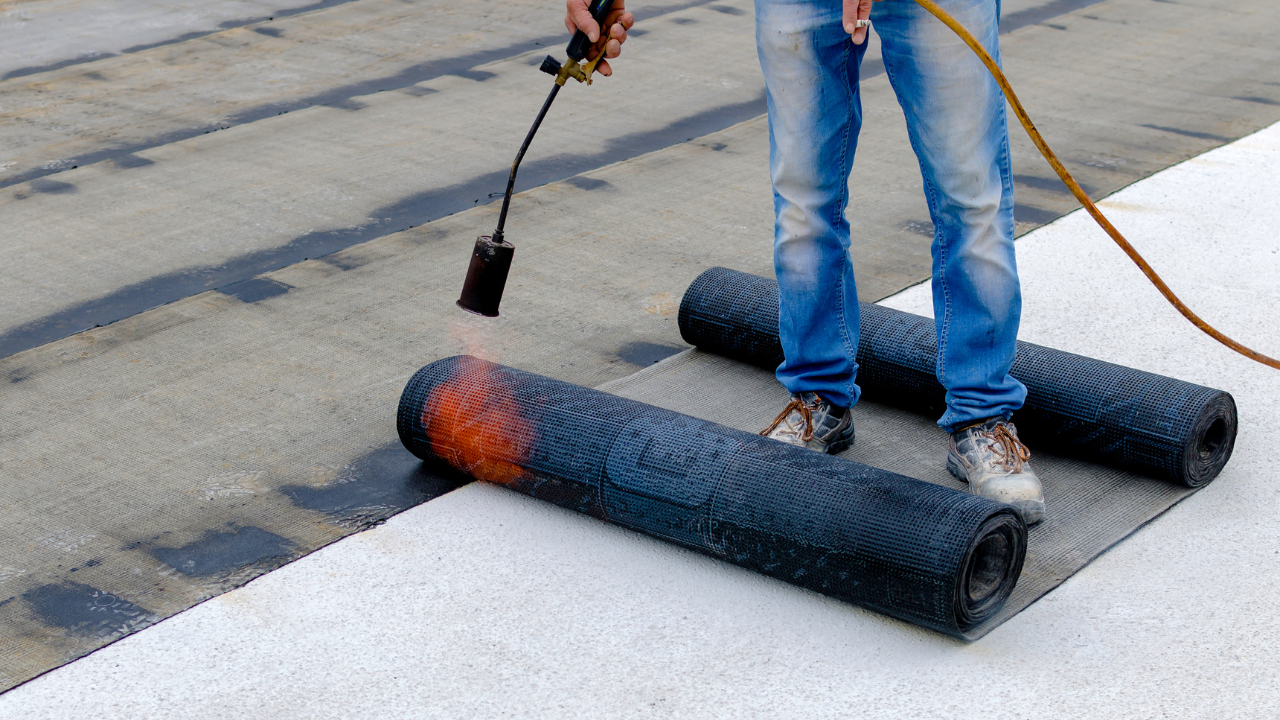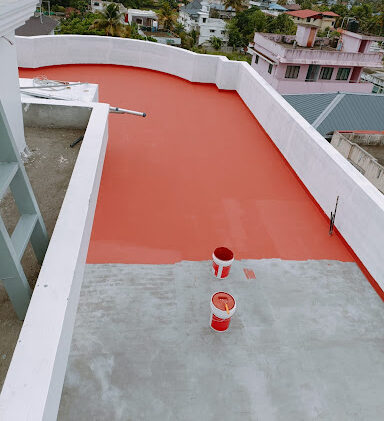Our Services
One-Stop Solution for Waterproofing Problems
Membrance Waterproofing

Membrane Waterproofing
A waterproofing membrane is a thin, flexible, and impermeable layer of material applied to a surface to prevent water from penetrating. It acts as a barrier, protecting the underlying structure from moisture damage.
Key Characteristics:
-
- Water-tight: Prevents water from passing through.
- Durable: Resistant to wear and tear, chemicals, and environmental factors.
- Flexible: Can conform to various shapes and surfaces.
- Adhesive: Adheres well to the substrate for effective sealing.
Types of Waterproofing Membranes:
-
- Bituminous Membranes: Made from bitumen, a petroleum-based material. They are commonly used in roofing and foundation waterproofing.
- PVC Membranes: Made from polyvinyl chloride, known for their durability, flexibility, and resistance to chemicals.
- TPO Membranes: Made from thermoplastic polyolefin, offering excellent resistance to UV radiation, chemicals, and punctures.
- EPDM Membranes: Made from ethylene propylene diene monomer rubber, known for their high tensile strength and resistance to weathering.
- Liquid-Applied Membranes: Applied as a liquid and cure to form a seamless, waterproof coating.
Applications of Membrane Waterproofing:
-
- Roofing: Protecting roofs from water infiltration.
- Basements and Foundations: Preventing water seepage into basements and foundations.
- Tunnels and Bridges: Protecting concrete structures from water damage.
- Swimming Pools and Water Features: Creating watertight barriers for pools and other water features.
- Industrial Applications: Protecting industrial equipment and structures from moisture and corrosion.
Methodology of Membrane Waterproofing
1. Surface Preparation:
-
- Thorough Cleaning: Remove all dirt, dust, loose particles, oil, grease, and any existing coatings from the surface. This is crucial for proper adhesion of the membrane.
- Repairing Defects: Fill cracks, holes, and other imperfections in the substrate using suitable repair materials.
- Smoothing the Surface: Ensure a smooth and even surface for optimal membrane application.
2. Primer Application (if required):
- Apply a primer to the prepared surface to improve adhesion and enhance the performance of the membrane.
- Follow the manufacturer’s instructions for primer selection and application.
3. Membrane Installation:
- Sheet Membranes:
- Unroll the membrane sheets, ensuring proper overlap and alignment.
- Secure the sheets in place using adhesives, mechanical fasteners, or heat welding methods (depending on the membrane type).
- Ensure proper sealing of all seams and overlaps to prevent water penetration.
- Liquid-Applied Membranes:
- Apply the liquid membrane using a roller, brush, or spray equipment.
- Follow the manufacturer’s instructions for the number of coats required and drying times.
- Ensure even coverage and avoid air bubbles or other imperfections.
4. Protection and Curing:
-
- Protect the Membrane: Protect the installed membrane from damage during subsequent construction activities.
- Curing: Allow the membrane to cure properly according to the manufacturer’s instructions. This may involve specific temperature and humidity conditions.
5. Inspection and Testing
-
- Visual Inspection: Conduct a thorough visual inspection to ensure proper installation, adhesion, and absence of any defects.
- Water Testing (if applicable): Perform water testing to verify the effectiveness of the waterproofing system.
Important Considerations:
-
- Safety: Wear appropriate personal protective equipment (PPE) during installation, such as gloves, safety glasses, and respiratory protection.
- Weather Conditions: Avoid applying membranes in extreme weather conditions, such as rain, high winds, or extreme temperatures.
- Quality Control: Implement proper quality control measures to ensure the quality and effectiveness of the waterproofing system.
By following these steps and adhering to best practices, you can effectively install waterproofing membranes to protect structures from water damage and ensure their long-term durability.
Benefits of Membrane Waterproofing:
-
- Protects Structures: Prevents water damage, corrosion, and structural deterioration.
- Increases Durability: Extends the lifespan of buildings and structures.
- Improves Aesthetics: Can enhance the appearance of surfaces.
- Reduces Maintenance Costs: Minimizes the need for costly repairs and maintenance due to water damage.
Professional Installation for Long-Lasting Protection
BUILDCARE waterproofing specialists are experienced professionals who can assist you with the following:
-
- Accurate Assessment: Conduct a thorough inspection to identify potential issues.
- Quality Materials: Use high-quality waterproofing materials.
- Expert Installation: Ensure proper application of the chosen technique.
- Warranty: Provide a five-year warranty for our work, giving our clients peace of mind.
By utilizing appropriate waterproofing membranes, engineers and builders can effectively protect structures from water damage, ensuring their longevity and performance.
